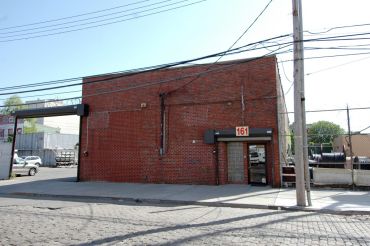-

Mayor Mike Bloomberg addresses reporters following his opening remarks at ICSC We were inside the West Ballroom at The Hilton New York, on the hunt for available seats when a large and friendly man sitting dead center in the front row waved us over and asked us to sit with him.
That friendly man was Bruce Ratner, head of Forest City Ratner Companies, who had no idea that he had just invited two reporters from The Commercial Observer to join him.
When we—colleague and fellow “Dan” Daniel Geiger is here as well—introduced ourselves to Mr. Ratner, he politely asked that we not ask him anything on the record. So we did not, and instead shared a nice conversation about growing up in New York City—he is originally from Cleveland, Ohio, and I grew up blocks away from where he lives now on the Upper East Side—and on the imminent return of the NBA.
In person, Mr. Ratner is a delightful and forthcoming chap—nevermind that his vision for a basketball arena in Brooklyn has also included the removal of homeowners living in Prospect Heights through the use of eminent domain.
We were among the 6,600 people in attendance at the 2011 International Council of Shopping Centers’ New York National Conference and Deal Making, an annual convention that brings the biggest names in retail and commercial brokerage and situates them in a string of booths along the comfy expanses of The Hilton New York.
Mayor Mike Bloomberg was scheduled to give the opening remarks at the event, and he arrived moments after we did and gave Mr. Ratner a hearty greeting.
The Mayor then took the podium, where he proceeded to tell the attendance how New York, in all her glory, has thrived in retail where the rest of the nation has not.
“Every way you look at it, I think it’s fair to say retailing is the key industry, a $78 billion-a-year industry, employs more than 300,000 jobs, and makes up roughly 10 percent of our private sector employment,” said Bloomberg.
The city has regained two-thirds of the jobs lost in the recession, he said, and the city’s commercial real estate market is the strongest in the nation.
“People are clearly confident in New York’s future, and want to be a part of that future themselves, and there’s a lot of evidence for it,” Mayor Bloomberg added.
That evidence has been foot traffic. The city’s population is at an all-time high – over 8 million – and the city remains to be a top tourist draw throughout the US.
Mayor Bloomberg expects 50 million tourists to have visited New York City by year’s end, and 90,000 hotel rooms by the close of December (a big bump from the 30,000 hotel rooms that existed roughly a decade ago, he estimates).
In short that is a lot of feet (100 million, be they real or prosthetic). Of course, that many feet translates into the more annoying byproducts of a tourist boom: Namely, crowded streets and traffic jams.
“Lot’s of cities don’t have crowded streets. While traffic is an annoyance, it’s also a symbol of the number of people that want to be here, and the same thing can be said not having enough housing,” he added.
Retail spending by international visitors was 37 percent higher during the third quarter of this year, he said.
And growth is not just limited to Manhattan. The Mayor urged attendees to venture out to the outer boroughs.
“During the past 10 years we’ve worked very hard to try to make sure that the growth of retailing, as well as the growth in our cultural institutions and job creation is through all five boroughs, but retailing is, for example, in our initiative to build and preserve affordable housing for nearly half-a-million New Yorkers,” said Mayor Bloomberg.
There have been a host of mixed-use developments in the outer-boroughs – like The West Farms Development in the Bronx (spearheaded by former speaker of the City Council Gifford Miller) and The Ironstate Development Company’s $150 million project at a former Naval port base in Staten Island – that have been announced in recent weeks, each riding on the premise that these retail-friendly developments will bring affordable housing and economic opportunities to neighborhoods in need.
Through the city’s affordable housing initiative, it has created enough retail space – 650,000 square feet in the past seven years alone – to house the MoMa, he added.
“By zeroing in on what has long been underused land throughout the city and combining that with targeted public investments, we’ve created the potential going forward for millions of new square feet of retail space in all five boroughs,” he added.
Downtown Brooklyn’s population is thirty times greater than what it was ten years, and more than 150,000 shoppers visit the area every single business day, he said. Sugar and Plumm and America’s BBQ Company will be moving into the area, he added.
And then the Mayor referenced The Atlantic Yards project, the controversial – and thriving – development headed by my esteemed new seat mate (Mr. Ratner, not Mr. Geiger). The Mayor joked that he had already bought himself a Nets ticket for when the team relocates from New Jersey to Brooklyn in 2012.
“I bought mine. Did you send me a bill yet?” Mayor Mike asked Mr. Ratner.
“I sure did. Better question is have you paid yet?” chuckled Mr. Ratner.
In short, New York’s cards are the best cards to play, emphasized Mayor Mike. And he asked the brokers and retailers in attendance to venture to the outer boroughs, and to take heed to the fact that 2 out of every 5 people who live here were born outside the United States.
And with that, he exited the ballroom, with Mr. Ratner rushing to join him.
Farewell, Mr. Ratner. It’s been real.
drosen@observer.com


